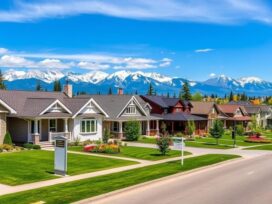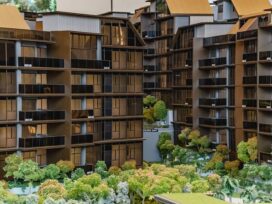
Dothan, AL Recreation Planning: Paulding County Recreation and Trails
Developing recreational spaces that encourage outdoor activities and provide green spaces for residents is essential for community well-being and environmental sustainability. The comprehensive recreation and trails master plan for Paulding County in Dothan, AL, was created with these priorities in mind, aiming to provide a network of parks, trails, and green spaces that are accessible, sustainable, and adaptable to future growth. This article examines the planning approach taken to develop a system that balances recreational needs with the goal of preserving natural areas, ultimately fostering a healthier, more connected community.
For more information on related projects, visit barge design solutions dothan al.
Overview of the Paulding County Recreation and Trails Project
The Paulding County recreation plan addresses the growing demand for outdoor spaces that can accommodate a wide range of activities while protecting local ecosystems. The plan includes the creation of multiple recreational areas and an interconnected trail network, designed to provide residents with safe and accessible outdoor environments. This approach supports both active and passive recreational opportunities, from hiking and cycling to quiet, reflective green spaces. The comprehensive nature of this plan allows it to serve as a long-term guide for managing and expanding the county’s park and trail system.
For additional details, explore paulding county recreation.
Key Components of the Recreation and Trails Master Plan
The development of the Paulding County master plan focused on several essential components that collectively enhance accessibility, sustainability, and community engagement:
- Trail Connectivity: A network of interconnected trails is a central feature of the plan, linking various parks, neighborhoods, and points of interest. This connectivity encourages active transportation options and fosters community connection.
- Green Space Conservation: The plan places a strong emphasis on preserving green spaces and natural habitats. Careful planning ensures that recreational areas coexist with preserved ecosystems, allowing local flora and fauna to thrive.
- Accessibility and Inclusivity: The design includes accessible pathways, picnic areas, and restrooms, making it possible for people of all ages and abilities to enjoy the facilities.
- Diverse Recreational Opportunities: The master plan incorporates spaces for diverse activities, including walking, biking, picnicking, and nature observation. This variety ensures that the park system appeals to a broad audience with varied interests.
- Community Input and Engagement: Community feedback played a key role in shaping the plan, allowing residents to voice their preferences and needs. This input helped ensure that the final design aligns with the expectations and priorities of the community.
These components work together to create a comprehensive recreational system that serves the community while respecting the natural landscape.
Benefits of the Paulding County Recreation and Trails Master Plan
The master plan for Paulding County offers multiple benefits that enhance both community access to outdoor spaces and environmental sustainability:
- Enhanced Community Access: The network of trails and recreational spaces provides accessible options for residents, allowing them to easily access parks and green spaces from different parts of the county.
- Promoted Physical Activity: By offering diverse recreational options, the plan encourages outdoor activities, contributing to improved physical health and wellness for residents.
- Environmental Conservation: By preserving green spaces and minimizing ecological disruption, the plan supports biodiversity, protects natural habitats, and reduces urban heat islands.
- Economic Impact: Improved recreational facilities can attract visitors and contribute to the local economy through increased foot traffic to nearby businesses and recreational tourism.
- Improved Quality of Life: Access to well-maintained green spaces and recreational facilities has been shown to improve mental well-being and foster a sense of community, enhancing the overall quality of life for residents.
These benefits underscore the positive impact that well-planned recreational spaces can have on community wellness, environmental health, and local economies.
Detailed Insights into Master Plan Components
Each component of the master plan contributes to the overall goal of providing sustainable, accessible recreational spaces that meet community needs. Here are further details on some of the critical elements:
- Trail Network Design: Trails are designed to connect not only parks but also neighborhoods, schools, and local businesses, making them viable for both recreation and daily commuting. The trail design also considers accessibility and ease of maintenance, ensuring long-term usability.
- Ecosystem Protection and Restoration: The plan includes designated areas for conservation, as well as strategies for habitat restoration in locations where natural ecosystems have been disturbed. This approach protects native species and helps restore balance to local ecosystems.
- Inclusive Facilities: Recreational facilities are designed to accommodate individuals with mobility challenges, including accessible playgrounds, restrooms, and parking areas. This inclusivity ensures that all members of the community can enjoy the park system.
- Community Gathering Spaces: In addition to trails and green spaces, the plan includes areas for social gatherings and community events, such as amphitheaters, picnic shelters, and open lawns. These spaces are designed to promote community engagement and provide venues for local events.
- Sustainable Materials and Energy Use: To minimize environmental impact, the plan calls for the use of sustainable materials in infrastructure, such as recycled materials for pathways and renewable energy sources for lighting.
By addressing these elements, the plan aims to create a park and trail system that balances recreation, conservation, and community engagement.
Impact of Recreation Planning on Community and Environment
Recreation and trails master plans like the one for Paulding County play a significant role in supporting public health, environmental conservation, and social cohesion. By creating spaces that are accessible, sustainable, and enjoyable for residents, these plans foster a culture of outdoor activity and respect for natural resources. The emphasis on preserving green spaces and providing diverse recreational options makes these public areas valuable assets for communities, offering long-lasting benefits for people and the environment alike.
Projects that integrate comprehensive planning with community involvement contribute to a healthier, more connected society. The Paulding County plan illustrates how thoughtful design and strategic planning can create recreational spaces that are both adaptable and beneficial, serving as a model for future community-focused recreation initiatives.







